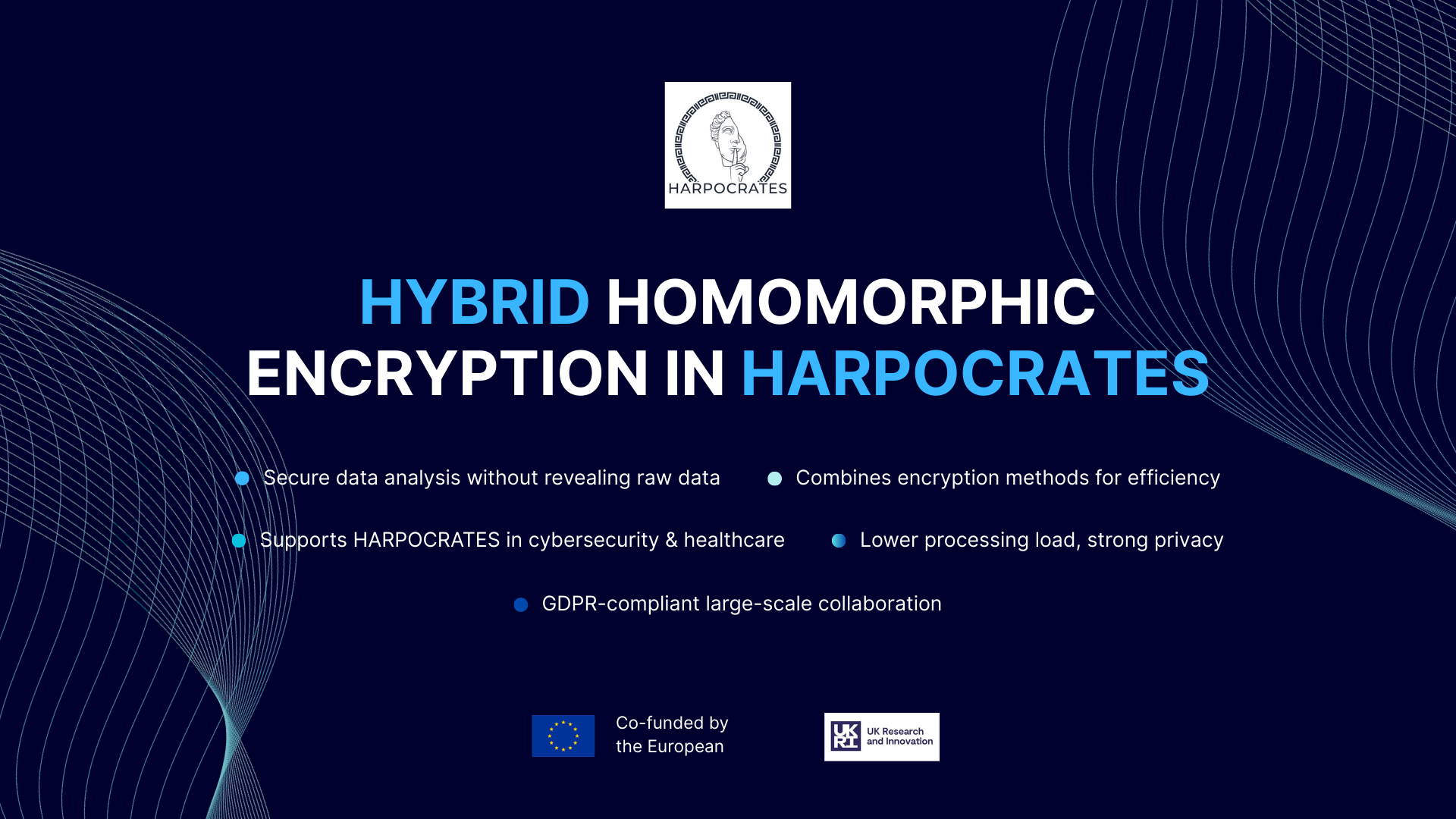
Introduction
The HARPOCRATES project develops privacy-preserving technologies that allow organisations to analyse sensitive data without exposing it. One of the approaches explored in the project is Hybrid Homomorphic Encryption (HHE). This method combines different cryptographic techniques to balance security, efficiency, and practical deployment.
What Hybrid Homomorphic Encryption Means
Homomorphic encryption allows data to be processed in encrypted form. This ensures that the system performing the computation never sees the raw values. While powerful, fully homomorphic encryption can be computationally demanding, especially for complex operations or large datasets.
Hybrid homomorphic encryption addresses this by combining homomorphic encryption with other techniques such as functional encryption, symmetric encryption, or secure key exchange. This makes it possible to keep the benefits of encrypted computation while improving performance and reducing resource requirements.
Relevance to HARPOCRATES
HARPOCRATES focuses on two main demonstrators:
-
Threat intelligence sharing for public authorities
-
Sleep medicine analytics for healthcare
In both cases, sensitive data, such as system logs from multiple organisations or EEG-based medical recordings, needs to be processed collaboratively without revealing the underlying information.
HHE can be applied to:
-
Encrypt data locally at each participating institution.
-
Use homomorphic encryption for the most sensitive computations, ensuring privacy throughout.
-
Combine with faster encryption schemes for less sensitive or intermediate steps, reducing the overall processing load.
This layered approach supports HARPOCRATES’ goal of making privacy-preserving data analytics not only secure but also operationally practical.
Benefits in HARPOCRATES Context
-
Performance optimisation – Reduces the heavy computational overhead associated with purely homomorphic encryption.
-
Flexible integration – Can be tailored to different data types and processing requirements in healthcare and cybersecurity workflows.
-
Regulatory alignment – Supports GDPR compliance by keeping identifiable data encrypted throughout processing and storage.
-
Scalability – Makes large-scale collaboration possible without prohibitive delays or costs.
Example Applications in Project Work
In the threat intelligence demonstrator, HHE can enable encrypted anomaly detection where only summary alerts or encrypted model outputs are shared. In sleep medicine, HHE can allow encrypted EEG feature extraction and classification while keeping patient data secure across multiple hospitals.
By applying HHE in these use cases, HARPOCRATES demonstrates that privacy-preserving computation can be adapted to different operational needs, paving the way for adoption in other sectors such as finance, mobility, and public services.
